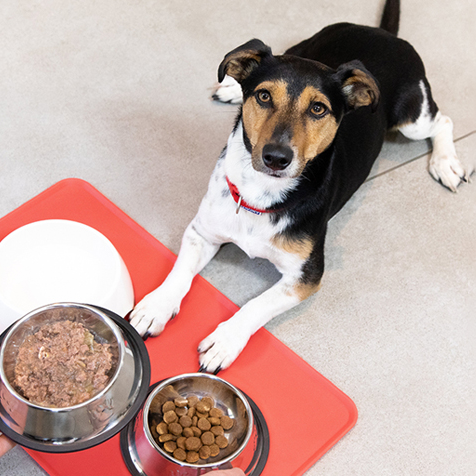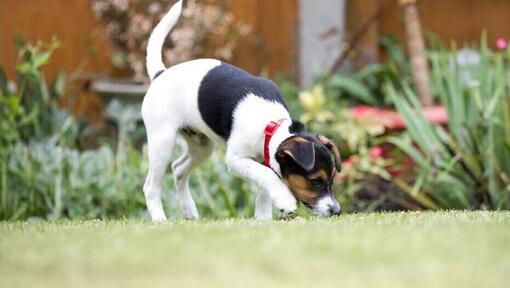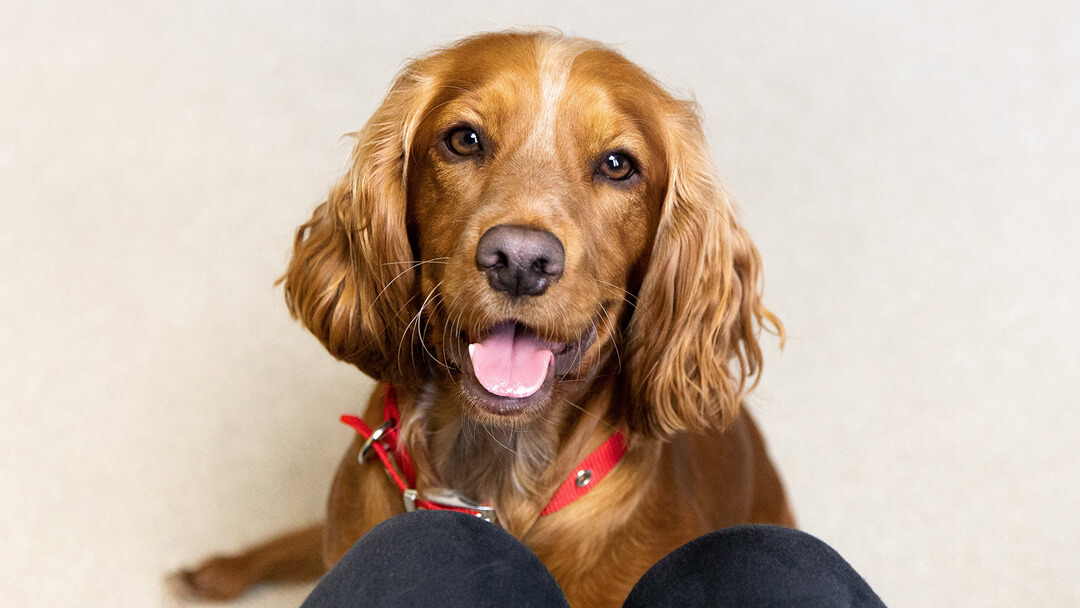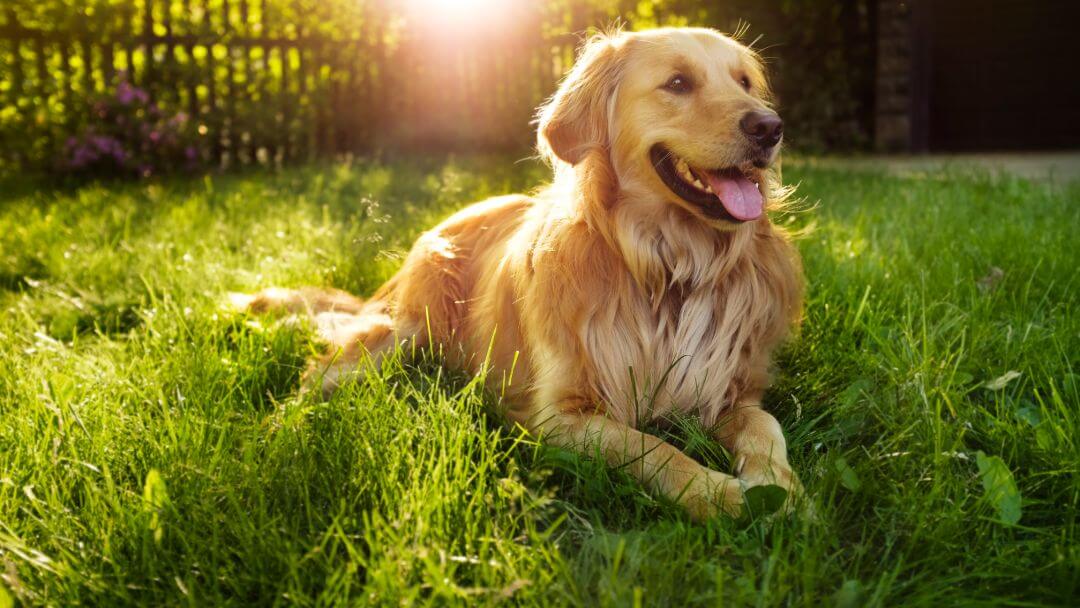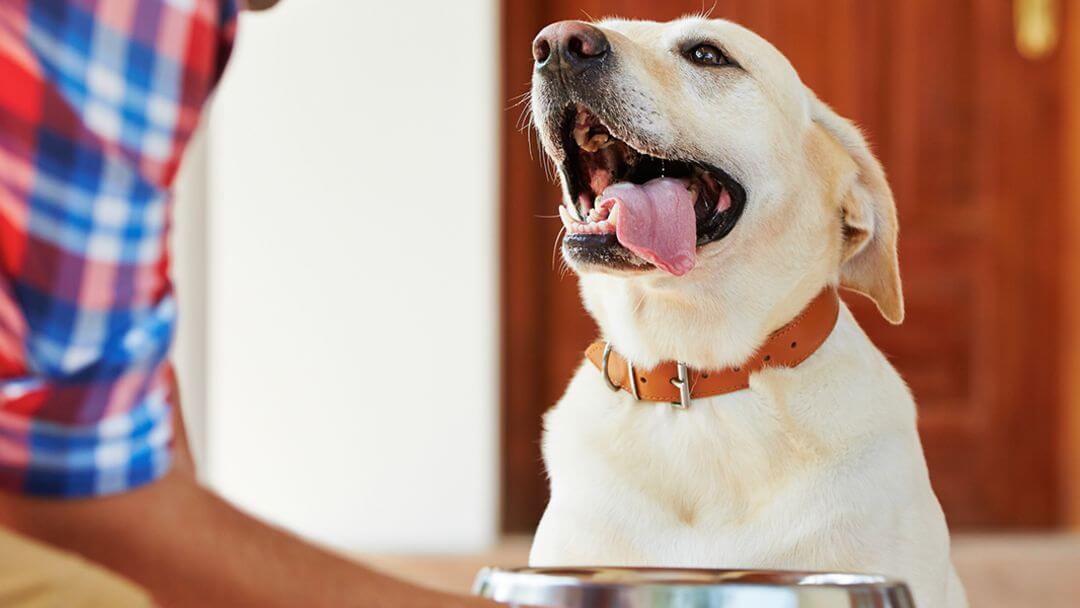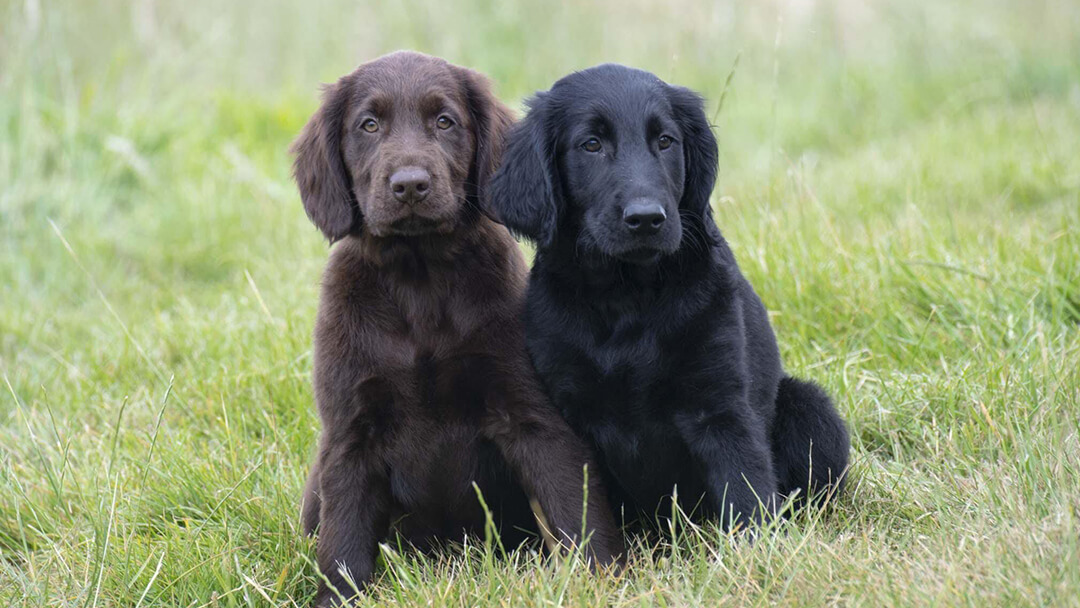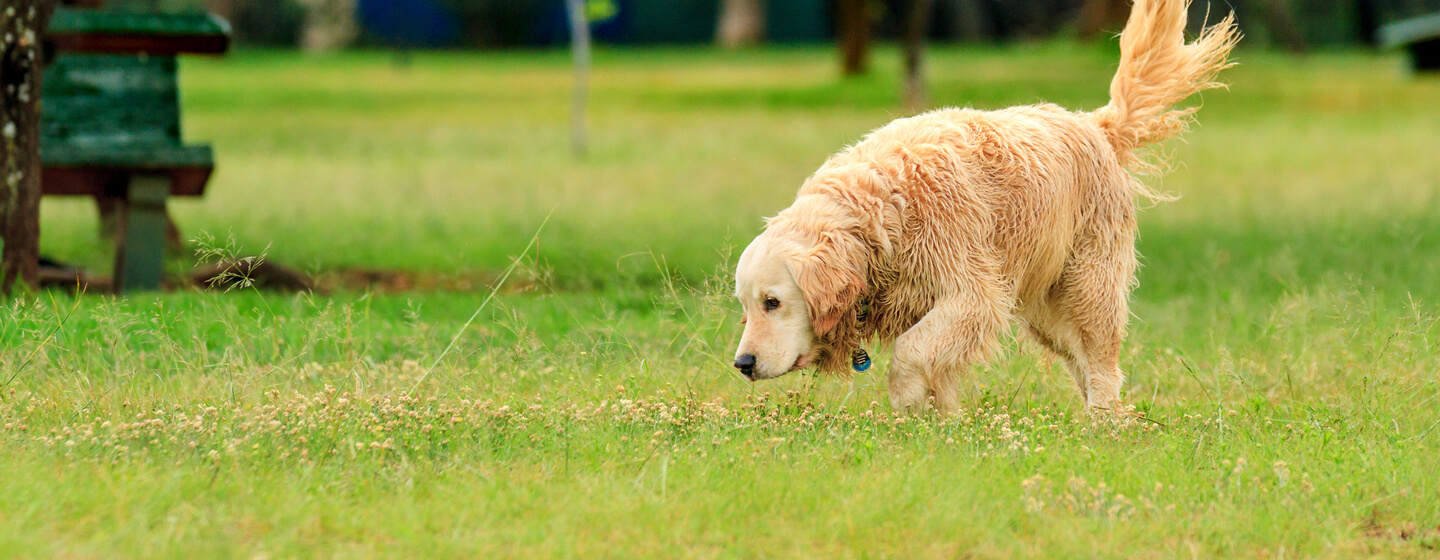
Most people think that dogs only wag their tails when they're happy, but is that the truth? Read our article to find out everything you need to know about your dog's most invaluable communication tool and what all the different dog tail signs mean.
Your dog’s tail is an invaluable communication tool. Whether it’s long, short, curly or straight, dog tails serve to provide an indicator of how they’re feeling. It’s a common belief that a wagging tail means a happy dog, but this isn’t always the case. Dogs use their entire body to communicate so it often requires you to take a look at the rest of their body language and the situation they’re in to understand how they’re really feeling.
We’ve created this handy guide to tell you why dogs wag their tails and what all the different wags can mean.
Why do dogs wag their tails?
Tail wagging is an instinctive behaviour that develops between 3 and 4 weeks of age depending on your dog’s breed, and is one of the primary communication methods to both other dogs and people. While it’s commonly thought that dogs wag their tail to show they are happy, it can be for other reasons as well such as nervousness and excitement.
Dog tail signs and positions - what do they mean?
To decipher what it means when your dog wags their tail, you’ll have to take a step back and look at the position of their tail as well as the speed of the wag itself. Keep reading to discover more about why do dogs wag their tails and the various dog tail signs.
Natural position, no wag
This position indicates relaxation in your dog. The natural tail positions for most dogs will be hanging down near their heels, but this will depend on your dog’s breed. Those with curly tails such as Samoyeds will have them curled over their back in the natural position.
Erect, wagging tail
You may think that an erect, wagging tail tells you that your dog is happy, but this is actually a behaviour usually displayed in excited dogs, meaning that their behaviour may be unpredictable. It could be that they’ve seen a squirrel or a new visitor has arrived at the house – anything that gets them excited can be the reason behind why do dogs wag their tails.
Backwards and gentle wagging
This dog tail sign says that they’re curious and may be a little unsure of a situation. You may see this if they’re looking at a strange object or creature that they’ve never seen before.
Tail between legs
If your dog has their tail between their legs or tucked, this indicates that they may need a little space as they could be feeling nervous or scared. If they’re displaying small, throbbing wags or twitches at the same time it may suggest that they’re contemplating a fight or flight response.
Big wags
A big, carefree wag is the best kind as it actually indicates a happy dog! This may also be accompanied by an entire body wiggle which says that your dog is extremely happy and ready for interaction.
Vertical tail
If their tail is high in the air and rigid, be wary as this dog tail sign can indicate aggression in dogs. It’s usually best to give them as much space as possible and wait for them to calm down before interacting with them.
The direction of the wag
According to Live Science, the direction of the wagging also speaks volumes. If the tail is wagging to the right it’s usually positive, whereas if it’s left it’s generally negative indicating fear, stress or anxiety. This is because the left hemisphere – the part of the brain associated with positive-approach feelings – controls the right side of the body.
Interestingly, a study done in 2013 mentions that dogs can also decipher the meaning of the direction of a tail wag in other dogs. Using 43 pet dogs of differing breeds, the study showed videos of dogs wagging their tails in both right and left directions to see how they reacted, using a vest to monitor their heart rate. When shown a dog with a right wagging tail, most stayed relaxed and some even attempted to approach the dog on screen, indicating that this must be a positive signal. The other dogs were shown a video of a left wag, and these displayed symptoms of anxiety and their heart rate actually sped up.
The importance of tails
Where the answers to the question “why do dogs wag their tails?” is usually communication related, there are a whole range of other useful things that they can do too! Dr. Lisa Radosata of Florida Veterinary Behaviour Service says that their tail can act as a rudder when they’re swimming in water, and is key for their balance when they’re running as it allows them to take tight turns without falling over.
In previous years, many owners and breeders chose to dock their dog’s tails which was usually for cosmetic reasons. The procedure is now illegal in many countries as it’s unnecessary and can compromise your dog’s communication methods, as well as their balance.
If a dog has a docked tail it’s often difficult to decipher the dog tail signs and tell how they’re feeling as they won’t be able to use one of their main communication devices to alert you to their mood.
If a dog has a docked tail it’s often difficult to tell how they’re feeling as they won’t be able to use one of their main communication devices to alert you to their mood.
So now you know why dogs wag their tails! It’s important to remember that wagging doesn’t always indicate a happy dog and you should always look at the bigger picture to decipher how your dog is really feeling.



